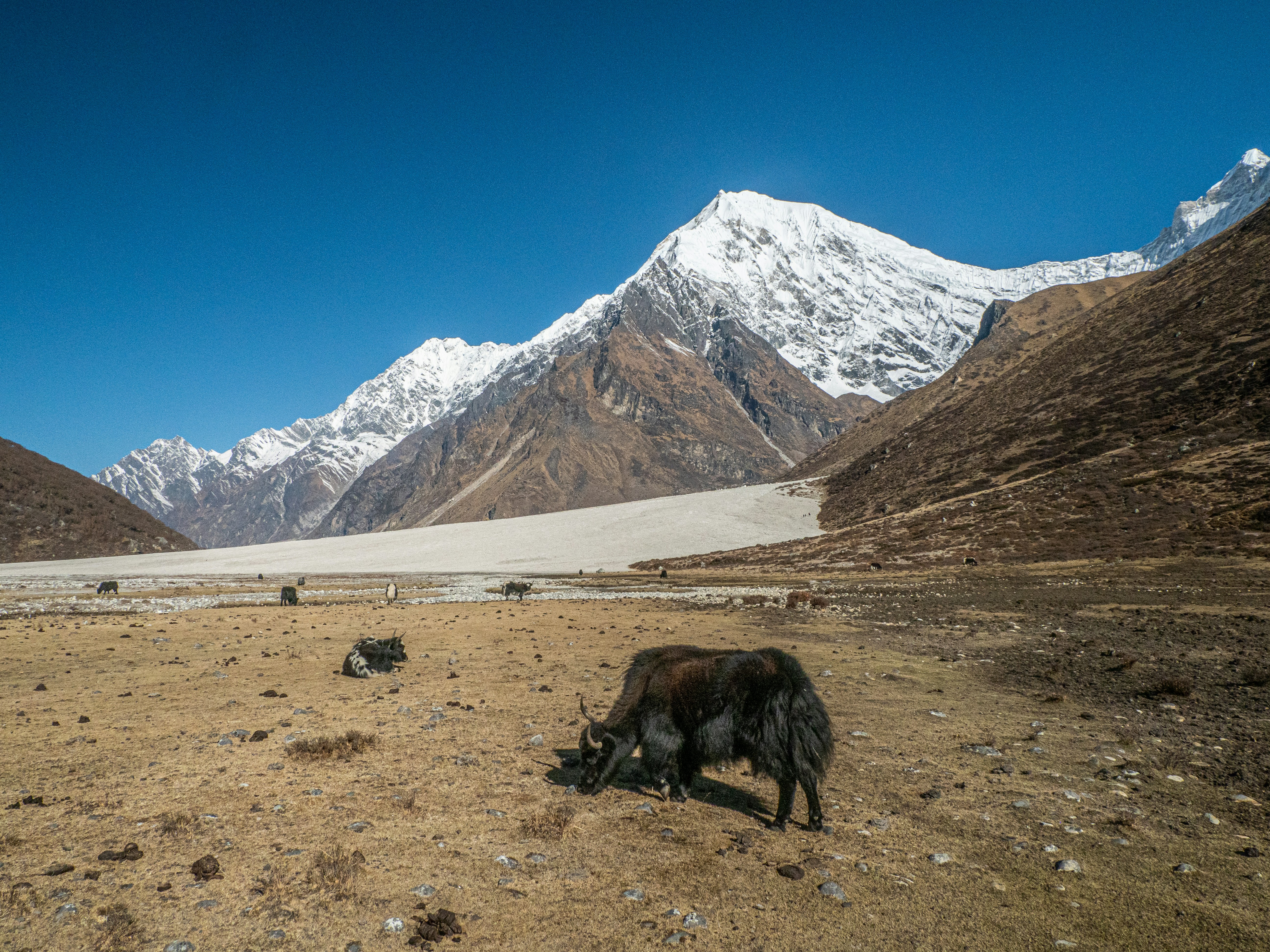Introduction to the Tibetan Plateau Ecosystem
The Tibetan Plateau, often referred to as the “Roof of the World,” is the highest and largest plateau on Earth, covering approximately 2.5 million square kilometers. This remarkable geography is characterized by its vast, elevated terrain, with an average elevation exceeding 4,500 meters above sea level. The unique features of the Tibetan Plateau influence its climate, creating a diverse range of ecological conditions that support various forms of life. Positioned at the intersection of several mountain ranges, including the Himalayas, the Karakoram, and the Kunlun Mountains, this region presents a breathtaking landscape, featuring deep valleys, expansive lakes, and glaciers.
The climate of the Tibetan Plateau is predominantly alpine, characterized by low temperatures, strong solar radiation, and distinct seasonal variations. Winters are long and harsh, while summers can be surprisingly short yet intense. Precipitation is primarily concentrated during the summer months, contributing to the formation of unique ecosystems. The harsh climatic conditions necessitate resilience among the flora and fauna, and vegetation on the plateau has adapted remarkably to these challenges. Despite the severe environment, the Tibetan Plateau is home to a diverse array of plant life, including grasses, shrubs, and hardy alpine plants.
The vegetation plays a crucial role in the ecosystem, contributing to soil stability, preventing erosion, and supporting a variety of wildlife. It also serves as a vital resource for the local human populations, who have adapted their livelihoods around the unique biodiversity of the area. Understanding the Tibetan Plateau’s ecosystem and its vegetation in particular is essential for recognizing how these plants endure and flourish in such extreme conditions. This foundational knowledge will pave the way for exploring the resilience mechanisms employed by Tibetan vegetation as it faces an ever-changing environment.
Types of Vegetation Found on the Tibetan Plateau
The Tibetan Plateau, often referred to as the “Roof of the World,” hosts a diverse range of vegetation types, each uniquely adapted to the harsh climatic conditions characterized by high elevation, intense solar radiation, and extreme temperature fluctuations. The primary types of vegetation that flourish in this region include alpine meadows, scrublands, and high-altitude forests.
Alpine meadows cover vast expanses of the plateau, especially during the short growing season. These meadows are comprised of hardy perennial grasses, herbs, and flowering plants like the iconic Tibetan blue poppy (Meconopsis betonicifolia) and the vibrant alpine buttercup (Ranunculus). The shallow root systems of these plants allow them to access moisture efficiently while helping to stabilize the fragile soil, thus reducing erosion caused by wind and water.
Scrublands on the Tibetan Plateau are largely dominated by shrub species such as junipers (Juniperus spp.) and willows (Salix spp.), which are resilient to the severe climatic conditions. These shrubs have adapted to the thin air and limited moisture availability, exhibiting traits such as small, needle-like leaves, which minimize water loss through transpiration. Scrublands play a crucial ecological role in providing shelter and food for various wildlife species, thus supporting the region’s biodiversity.
At lower elevations, patches of high-altitude forests can be found, primarily composed of conifers such as firs (Abies spp.) and larches (Larix spp.). These trees have adapted to the cool temperatures and strong winds prevalent in the area, featuring conical shapes that reduce snow accumulation on branches. The forest ecosystem fosters an intricate web of life, offering habitat for numerous mammals, birds, and insects, while simultaneously improving soil health through organic matter accumulation.
Overall, the vegetation on the Tibetan Plateau exemplifies resilience, showcasing a remarkable ability to thrive under some of the planet’s most challenging conditions. Their ecological roles are indispensable, contributing to the stability and health of the environment.
Mechanisms of Resilience in Tibetan Vegetation
The Tibetan Plateau, often referred to as the “Roof of the World,” presents a challenging environment for vegetation due to its extreme altitude, varied climate, and limited resources. Plants in this region have developed an array of survival strategies that contribute to their resilience and enable them to endure harsh conditions. One of the primary mechanisms is drought resistance. Many species possess specialized adaptations, such as deep root systems that penetrate the soil to access water stored at greater depths. Additionally, some plants have developed leaves with a reduced surface area or waxy coatings to minimize water loss through transpiration. These physiological traits allow them to survive prolonged dry spells.
Another critical factor in the adaptability of Tibetan vegetation is cold tolerance. The region experiences severe temperature fluctuations; thus, plants have evolved via mechanisms like antifreeze proteins that protect cellular structures from ice crystal formation. Furthermore, perennial plants exhibit modifications such as increased insulation and the ability to enter a state of dormancy during the coldest months, thereby conserving energy and resources until conditions improve.
In terms of nutrient acquisition, the Tibetan soil is often limited in available nutrients, prompting natural selection of plants that can efficiently utilize what is available. Many species form symbiotic relationships with mycorrhizal fungi and nitrogen-fixing bacteria, which enhance nutrient uptake and promote soil health. The interaction with mycorrhizae increases the surface area of plant roots, allowing for greater absorption of water and essential minerals. Meanwhile, associated nitrogen-fixing bacteria contribute to improving soil fertility, thus providing a sustainable means for plants to thrive in nutrient-poor environments.
These adaptive strategies exemplify the remarkable resilience of vegetation on the Tibetan Plateau, allowing these organisms to persist despite the extreme conditions they face. Understanding these mechanisms not only sheds light on plant survival in one of the most inhospitable environments on Earth but also highlights broader implications for ecosystem management and conservation.
Impact of Climate Change on Tibetan Vegetation
The Tibetan Plateau, often referred to as the “Third Pole,” is experiencing significant alterations in its ecological landscape due to climate change. Rising temperatures have led to shifts in the climatic conditions prevalent in this region, affecting vegetation patterns extensively. Studies indicate that average temperatures in the Tibetan Plateau have increased by approximately 1.5 degrees Celsius over the past few decades, a trend that poses challenges to the native flora.
Precipitation patterns are also undergoing change, with some areas experiencing erratic rainfall, while others face prolonged dry spells. This variability can hinder the growth and survival of plant species that have adapted to specific ecological niches. For instance, species such as the Tibetan barley and various medicinal herbs are observed to be shifting their geographical ranges to higher altitudes in response to changing climate conditions. Such movements could affect not only the species itself but also the myriad of organisms dependent on it for their survival.
The impact of these climatic changes extends to the overall biodiversity of the region. The interplay between rising temperatures and altered precipitation can lead to habitat loss and fragmentation, threatening the resilience of unique ecosystems found in the Tibetan Plateau. Research has provided insights into the decline of certain endemic species, which are particularly vulnerable to climatic stresses. The loss of biodiversity can have cascading effects, disrupting ecological balance and diminishing the capacity of ecosystems to respond to further environmental changes.
In light of these challenges, various conservation strategies are being developed to mitigate the adverse impacts on Tibetan vegetation. These strategies emphasize the importance of preserving genetic diversity, restoring degraded habitats, and implementing sustainable land management practices. By fostering the resilience of Tibetan vegetation amid climate change, it is possible to sustain the ecological integrity of this critical region while supporting local communities that rely on its natural resources.

